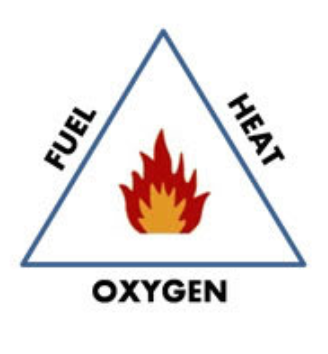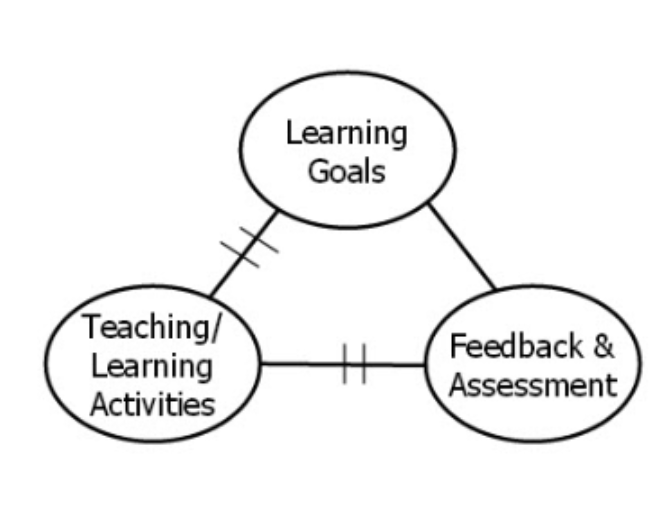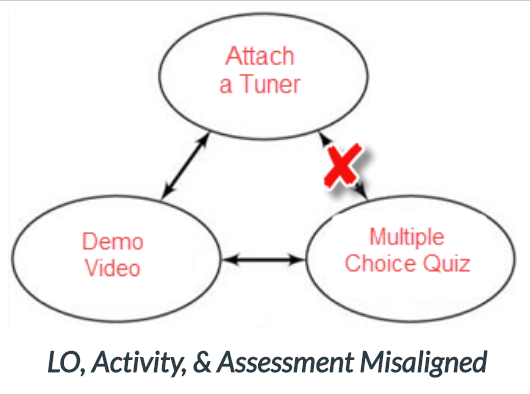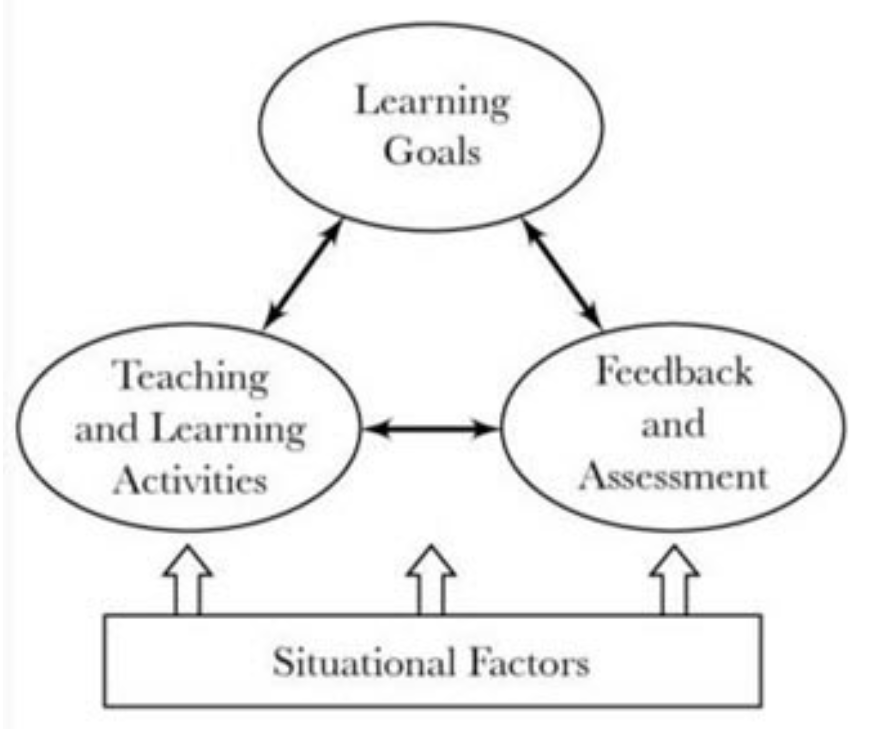Designing for Learning
 |
For a fire to exist, it must have, in the correct proportion, each of three elements: Fuel, Heat, and Oxygen. Without any one of these elements, a fire cannot burn. No element is more important than the other. Firefighters use this fire triangle concept to extinguish fires based on a given situation. By removing one of the elements, firefighters can destroy a fire. In Dee Fink's book, Creating Significant Learning Experiences (2003), he describes and visualizes the concept of properly aligning assessments with learning goals as represented in the following image. In Fink's model, each of the three elements is equally important and required for significant learning to exist. With a break-down in any of the elements, students will have difficulty achieving learning outcomes as desired. For example, even if assessments are properly constructed and aligned to learning outcomes, students will have difficulty completing outcomes if learning activities are not aligned with the assessments.
|
|
In Dee Fink's A Self Directed Guide to Designing Courses for Significant Learning (2003) |
|
The Alignment Triangle and Backward Design
 |
As with the fire triangle, if any of the design elements are broken, the course or lesson will not function effectively. The close and integrated relationships of learning outcomes, properly aligned assessments, and relevant learning activities provide the foundation to Backward Design. Due to the importance of these relationships, good planning and using design tools can make a large difference in the final product. What does Alignment mean? For a given learning objective, the assessment must be designed to truly reflect student learning. Likewise, activities must properly prepare students for the assessment. |
As an example, consider one learning objective (LO) from a lesson on learning to tune a ukulele:
In this case, the activity (video demo) may very well help students learn how to attach a tuner to their ukulele, but the assessment is not properly aligned to the learning objective. That is, while the student may or may not have achieved the learning objective, we have no way of knowing by assessing using a multiple-choice quiz. The LO states "students will properly attach the tuner to a ukulele." This LO requires action on the part of the student which is not demonstrable via a quiz. Using Fink's diagram, we might visualize the misalignment as: |
 |
Conceptually, this means that in order to best design a learning unit for a given learning objective(s) we must:
- ensure authentic assessment of if the results are achieved
- ensure activities and instructions which properly prepare students to successfully complete the assessments


